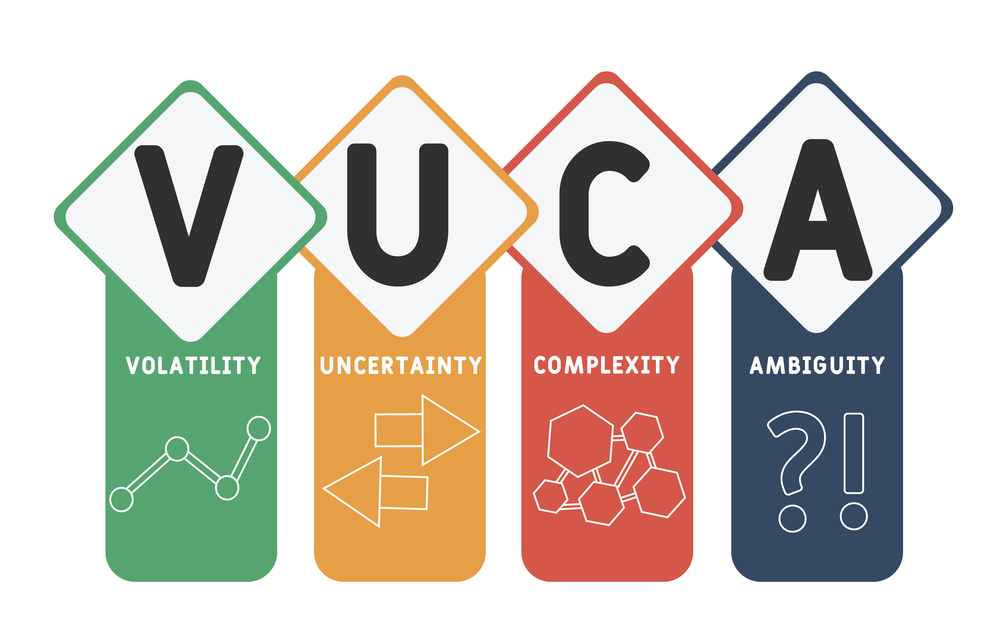The Cons of Policies Physical Return-to-Work
 In my last post, More Post-Pandemic Return-to-Office Mandates? (Part One) I talked about some positives of a physical return-to-work (or reduced remote work). In the blog, I’ll look at some of the trickier aspects and why working at home is so much better for some — plus some of the benefits of a hybrid work arrangement.
In my last post, More Post-Pandemic Return-to-Office Mandates? (Part One) I talked about some positives of a physical return-to-work (or reduced remote work). In the blog, I’ll look at some of the trickier aspects and why working at home is so much better for some — plus some of the benefits of a hybrid work arrangement.
The debate around returning to the office involves concerns about work-life balance, health and safety, inclusion and belonging issues, potential loss of talent, and employee morale issues. Let’s explore these in more detail.
The shift to physical return-to-work policies impacts employees’ work-life balance, which many have carefully cultivated over the past few years of remote and hybrid work. This flexibility means a lot to employees who are managing care for elders and/or children. This balance is crucial for employee satisfaction and productivity. Additionally, ongoing health considerations—especially during cold and flu season in the wake of the pandemic—remain a concern for many people. Returning to a physical office space raises questions about health protocols and safety measures, which are significant considerations for employees and employers.
A significant challenge for companies enforcing physical return-to-work policies is the risk of losing talent. Employees value the flexibility of remote work, and some are willing to leave their current jobs for roles that offer more flexibility. For top performers who often have a range of options available to them, the threat of losing these valuable employees to companies offering continued remote work is a concern for many organizations.
Physical Return-to-Work Employee Feedback
Many employees are hesitant to return to the office full-time. This resistance is often due to a lack of autonomy in the decision-making process regarding their own work arrangements – and the implications therein. Employees who have been working productively and happily from home for years may feel demotivated by sudden changes that don’t consider their preferences, their mental health, or the success they’ve had while working remotely.
 The shift back to office settings also sheds light on the significant concerns of harassment and bullying, which are more prevalent and immersive in the physical workplace. In addition, Black and racialized individuals and other members of equity-deserving groups continue to confront significant challenges within certain office environments. These include facing instances of discrimination and grappling with the issue of negative biases, which are serious concerns that can impact their professional growth and workplace experiences. These challenges should be addressed when contemplating return-to-office decisions.
The shift back to office settings also sheds light on the significant concerns of harassment and bullying, which are more prevalent and immersive in the physical workplace. In addition, Black and racialized individuals and other members of equity-deserving groups continue to confront significant challenges within certain office environments. These include facing instances of discrimination and grappling with the issue of negative biases, which are serious concerns that can impact their professional growth and workplace experiences. These challenges should be addressed when contemplating return-to-office decisions.
Why are Some Employers Forcing the Physical Return-to-Work?
While company leaders often tout mentorship and robust company culture as primary reasons for urging employees back to the office, this stance prompts a more profound examination. Is there more to these reasons than meets the eye? While fostering mentorship and a cohesive company culture is undoubtedly vital for personal growth and organizational unity, one can’t help but wonder if these reasons are as straightforward as they appear or if they mask other, less-discussed motives.
 This skepticism gains ground, particularly when considering the efficiency and success of remote work during the pandemic, which, for many, didn’t hinder but rather enhanced their productivity, access to mentorship, and more inclusive experiences. The effectiveness of remote work leads to questions about whether the push to return to the office is driven by other factors like a tighter grip on “old school” workforce management, a preference for a more traditional corporate presence, or revitalizing deserted downtown districts.
This skepticism gains ground, particularly when considering the efficiency and success of remote work during the pandemic, which, for many, didn’t hinder but rather enhanced their productivity, access to mentorship, and more inclusive experiences. The effectiveness of remote work leads to questions about whether the push to return to the office is driven by other factors like a tighter grip on “old school” workforce management, a preference for a more traditional corporate presence, or revitalizing deserted downtown districts.
There are even credible claims that companies are instituting physical return-to-work mandates—as a way of “quiet firing” or “silent sacking” remote workers. Some employees may choose to resign instead of uprooting their lives when they’re asked to move to a different city to comply with the mandate. This helps employers avoid the bad press of layoffs and the obligation to pay severance.
In this light, employees are justified in seeking clarity and honesty about the real driving forces behind the return-to-work mandates. But, depending on the hidden motives, employees may not get clear answers – and even if the answers are clear, they may not like what they hear. If the remote working period was indeed fruitful in terms of output, mentorship, and culture, then what exactly is fueling the urgency to revert to pre-pandemic work arrangements? For a truly collaborative and genuine workplace environment, I think company leadership should be transparent about their motivations in advocating for a return to the office. More importantly, they should consider checking to see if there are problematic aspects of their workplace culture that make in-person work unappealing.
Productivity in a Hybrid Work Environment
The hybrid work model, something that was already becoming more popular pre-pandemic, is a compromise between traditional office work and the flexibility of remote work. These models blend in-office and remote work, allowing employees to tailor their schedules to fit their personal and professional needs. This shift isn’t just about changing work locations; it reflects a deeper transformation in work culture driven by employee preferences and technological advancements.
 The benefits of adopting a hybrid work model are numerous. For one, it offers increased productivity as employees can choose work environments that suit their tasks, leading to greater focus and output. There’s also an improvement in work-life balance since flexibility in work location and hours helps employees balance their professional and personal responsibilities better. Additionally, hybrid models can lead to cost reductions for organizations, as well as personal and environmental benefits due to reduced commuting and enhanced employee satisfaction and retention.
The benefits of adopting a hybrid work model are numerous. For one, it offers increased productivity as employees can choose work environments that suit their tasks, leading to greater focus and output. There’s also an improvement in work-life balance since flexibility in work location and hours helps employees balance their professional and personal responsibilities better. Additionally, hybrid models can lead to cost reductions for organizations, as well as personal and environmental benefits due to reduced commuting and enhanced employee satisfaction and retention.
However, implementing a hybrid work model also presents its challenges. These include maintaining effective communication and collaboration among remote and in-office teams, ensuring equitable access to opportunities and resources for all employees, and managing the potential for miscommunication in a partially virtual environment. Solutions to these challenges include establishing clear communication protocols, utilizing technology to facilitate collaboration, and prioritizing mental health support. Regular check-ins and feedback are essential to ensure the model works for everyone involved.
Managing the Return-to-Office Transition
There isn’t a clear consensus on remote work and productivity, and different studies present varying perspectives. The impact of remote work on productivity can depend on numerous factors, such as the nature of the job, access to suitable technology, individual preferences, the effectiveness of remote work policies, and the quality of communication within teams.
Likewise, the same factors impact hybrid or in-office arrangements. In hybrid models, the balance between remote and in-office work needs to be carefully considered to suit the nature of the job, employee preferences, and the organization’s overall goals.
Understanding the diverse impacts of remote, hybrid, and in-office work arrangements is essential for organizations aiming to optimize productivity. By considering the specific needs of their workforce and the demands of various roles, employers can tailor their policies to support effective and efficient work environments, regardless of where the work takes place.
Employee Wellbeing and the Return-to-Office
If you’re an employee finding it tough to adjust to the return-to-office transition or an organization seeking to craft effective and empathetic return-to-office strategies, I can provide tailored support and guidance to navigate this significant change. Let’s work together to make this transition as smooth and positive as possible for you and your team.
Addendum – In August 2024, new research was reported: The Rise of “Quit and Staying” as Workers Return to Offices – How flexible work options boost employee engagement
Did this article spark any career-related questions, plans or concerns?
Reach out today for a free and confidential initial consultation by phone, email, or via direct message on X/Twitter, Facebook or LinkedIn.
P.S. If you haven’t yet done so, stay in the loop by subscribing to my bi-monthly newsletter. Click here. I promise not to spam, and your email address will always stay private.
If you enjoyed this topic or are interested in ongoing professional and leadership development, you’ll also enjoy reading or listening to How to Be Resilient in Your Career: Facing up to Barriers at Work, my book published in 2023 by Routledge. It’s available in print, as an eBook, and on Audible.
More than career coaching, it’s career psychology®.
I/O Advisory Services Inc. – Building Resilient Careers and Organizations TM.



